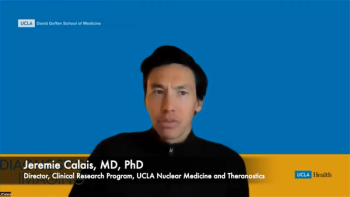
What Does the Future of Certification Look Like?
Artificial intelligence and other emerging technological advances may transform health-care certification, potentially improving access to best practice standards, increasing provider engagement, and bolstering collaboration.
As we look to the future of medical certifications, we see a space stacked with challenges, possibilities, and the certain ebb and flow of innovative change. With this in mind, let us take a closer look at the process of certification, the exciting tools paving the way for educators to reinvent certification, and how this forward momentum can support the training of health-care professionals (HCPs) and provide better patient care for all.
Preparation for medical practice has continued to evolve alongside new technologies and methodologies in both teaching and learning. At the heart of the process, certification still plays an essential role.
When considering imaging in particular, we task physicians with providing the interpretations of essential patient examinations, not just at the initial evaluation stage but as a routine and critical task. Their readings provide valuable direction in treatment and directly impact patient care. Those professionals reading and gathering essential information, deciphering its meaning, and driving key decisions must always have core competencies.
At its very root, certification demonstrates proficiency in these core competencies with the overarching goal of improving patient care. This goal should always live top of mind. Ultimately, we hope to establish that all HCPs can complete their work with familiarity at an acceptable base level. Certification makes it straightforward to recognize and operate with critical consistency throughout the field and helps ensure patient safety both as trainees learn and as they continue to grow as independent practitioners.
Breaking Down the Walls Between Training and Real-Time Clinical Imaging
Today, we focus certification on fair testing and accurate measurement of knowledge. While this is certainly important, technology offers the opportunity to reconsider this entire process. We now have the potential to break down the walls between training and real-time clinical imaging as we consider new types of examination possibilities: Artificial intelligence (AI)-driven assessment, high-tech simulations, and enhanced experience with hands-on digital learning aids may allow us to create virtual clinical certification environments or incorporate certifications into daily practice settings.
The strategic application of cutting-edge technology is destined to transform the certification industry. For example, modern medical simulators have their roots in aerospace flight testing. By combining the science of these innovative simulation experiences with medical knowledge, today’s students can access and realistically evaluate hundreds of unique pathologies at the click of a button and as often as they would like. They can train with confidence, early in their careers, in a way that is interesting and exciting.
Advancing Global Patient Care with New Approaches to Learning and Certification
With simulation, we can also embrace errors. Suddenly, each simulated mistake becomes a learning opportunity in a safe space. Students can practice any time, repeating the work until they feel comfortable. Imagine a world where this is what the process of certification means with technology acting as the bridge from learning to real clinical outcomes.
Online courseware and curriculums present unrivaled access to the latest in research, practice, and patient care. Today’s students have the world’s information at their fingertips, and this continues to change the way medicine is practiced and taught. As the process of training evolves and this breadth of knowledge meets AI and advanced technological tools, we see even more potential for education to blend seamlessly with professional work. The integration of these kinds of tools into existing workplace systems offers great opportunity to inspire ongoing evaluations to become increasingly more collaborative, engaged, and relevant.
Consider, for example, our access to information around rare and unusual diagnoses. With modern digital simulation, even a small facility can offer its students hands-on training for the most complex cases, building world-class confidence and expertise. As instructors provide more enhanced experiences, patient care improves. In the future, the gold standard of certification should reflect this shared knowledge. It should mean that your work can be read anywhere with any patient in the exact same way.
Assessing the Potential of Certification to Move Health Care Forward for All of Us
Some students and learners in the global community simply do not have the same access to resources in health care as others. Mindful training and certification allow us to address some of this variability and help HCPs around the world elevate and maintain proficiency.
To begin, an understanding of how tests are being performed and interpreted needs to be established in all geographical regions. We cannot assume or expect that the same tools are available to everyone. This requires us to ask several questions. First, what educational and technical resources do people need locally? What ways can we help them learn? Finally, what is the best way to validate their knowledge, skills, and abilities?
There is considerable variation when it comes to certification standards in different countries not to mention significant differences with access to resources. That said, we should strive to acquire the same information, no matter where we are, and distribute what we know as best practice far and wide. Today’s technology, alongside the consistency of certification, has the potential to help us do this and grow globally together.
Ms. Jolly is the council chair of the American Registry for Diagnostic Medical Sonography (ARDMS). She is an assistant professor of vascular technology at the Oregon Institute of Technology.
Dr. Russell is the council chair of the Alliance for Physician Certification and Advancement (APCA). He is an associate professor of medicine at the Warren Alpert Medical School of Brown University.
Newsletter
Stay at the forefront of radiology with the Diagnostic Imaging newsletter, delivering the latest news, clinical insights, and imaging advancements for today’s radiologists.




























